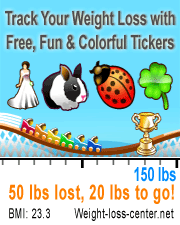|
|
One of the results of dieting that I struggle with the most is keeping my energy levels up while my calorie consumption goes down. Eating fewer calories during the day can really make you feel sluggish and much less motivated to move about more or get some exercise. I think this is an aspect of dieting that many dieters battle with every day.
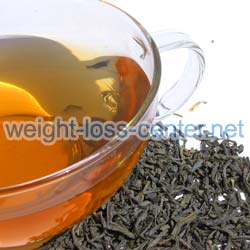 Green tea contains both EGCG and caffeine that make it a perfect fat fighting food that helps to boost energy. The good news is that while your diet might seem to be difficult to manage with everything else going on in your life, it doesn’t have to be. Your diet can be tweaked to help you have more energy and more vitality than before you began slashing calories. You can choose to add a number of fat fighting foods to your diet to help keep you going. You should make sure your diet always has enough calories to sustain you for the activities you have to do during the day (you can calculate an estimate of this using the Daily Calorie Intake Calculator). Then, try adding a few of these fat fighting foods that increase energy for an added boost to keep you moving and burning more calories.
Water – One of the main reasons why many people have troubles with energy is that they are dehydrated. The human body is 75% water and it needs to maintain this percentage in order to stay healthy and energetic. To accomplish this, you need to make sure you are drinking around eight glasses of water each and every day. While it’s true that food and other liquids will also help you reach this goal, drinking actual water will help to ensure you are staying hydrated. When you have enough water in your body, you will be able to limit your cravings as well as promote good digestion. Together, these benefits will fight fat and increase your energy levels each day.
Fruits – When your body needs energy, it turns to sugar as its primary source. But while you might reach for a donut, that’s not the kind of sugar that is helpful to your weight loss quest. Instead, you should look for natural sugars to help keep your blood sugar levels in a healthy range. Choosing fruits like apples or oranges will give you a boost of energy, while being low in calories, low in fat, and high in fiber. This combination will allow you to have the energy you need without having it burn away too quickly. The fiber will slow down the digestion of the sugar, for a longer lasting energy boost. Processed sugars are burned too quickly by the body, while also having no nutritional value. They will give you a quick boost of energy, followed by a drop in blood sugar which can make you feel sleepy and hungry.
Healthy Fats – Though you might think that losing weight means you need to lose all of the fat from your diet, this is far from the case. Instead, you need to add fat to your diet to help increase your energy. Like sugar, fat is a fuel your body needs in order to stay healthy and active. You will just want to choose healthier fats like those in avocados or in fatty fish, like tuna or salmon. By eating a serving or two of these fats each day, you will increase your health and notice your energy levels increase.
Green Tea – Most dieters have heard that green tea can help with weight loss and for the most part this is true. To begin with, green tea contains no calories (when you don’t add milk and sweetener), which makes it a perfect substitute for other beverages that contain empty calories like coffees, sodas and juices. Green tea also contains a compound called epigallocatechin gallate, or EGCG, that has shown to be able to help the body burn body fat more efficiently. Finally, green tea is a source of caffeine (unless you are drinking decaf) that will give your energy levels a boost.
To reap any benefits of drinking green tea it is said you need to drink at least 5 cups a day. For some people this would be no problem, but for others it may be a bit too much of a good thing. Despite this, green tea is considered an excellent fat fighting food that increases energy so feel free to drink as much as you like.
By adding some of these fat fighting foods to your diet, you can work towards a slimmer figure while also increasing your energy, which adds up to a healthy and happy new you.
Other Related Posts and Articles you May Find Interesting: “Weight Loss Vitamins in Your Diet”, “Weight Loss With Fat Burners”, “Fat Burning Exercises” and “Drinking Water is Important for Weight Loss and Health”.
When seeing that 95% of all dieters regain the weight they have lost, a dieter can become discouraged before they even begin. One of the things that seem to stand in the way of diet success is the management of hunger. Many people have troubles managing their hunger when they make the decision to lose weight. Often, this hunger is not merely an emotional response to stress or to the idea of a diet, but also a physical response that is triggered by an unbalanced diet, which causes the dieter to have cravings that can not be easily controlled.
 Try these diet tips that will help you to curb you hunger pangs and make losing weight a little easier. The idea of a hunger free diet is something many dieters dream of, myself included. Although this concept may seem far fetched, there are a number of diet techniques that can be combined in a healthy diet that will work miracles in helping reduce hunger. There may not be a weight loss diet that is 100% hunger free, but here are some excellent techniques to curb your pangs.
Increase Protein, Decrease Sugar
The body likes to burn sugar quickly, as this helps the person have instant energy. But when this fuel is consumed, the body then wants more. This leads to hunger and to very low dips in the blood sugar levels. When this happens, the person will have troubles following their eating plan and making healthy food choices. It’s better to find ways to stabilize the blood sugar that will help to level out hunger. One way to keep blood sugar levels stable is to add protein to every meal. Protein doesn’t break down as quickly, helping the body have a steady supply of fuel. Plus, if the meal does include carbohydrates, the body will not break them down as quickly in the presence of protein, helping to manage hunger before it begins.
Eat More Frequently
If you’re very hungry on a diet, you might want to ask yourself if you are eating enough calories. Many people think restricting their calories severely will help them to lose weight more rapidly. While there is truth in this statement, severe calorie restriction will also lead to a slower metabolism and more hunger pangs. It is helpful to break up your meals into smaller portions and space them out over the day. This way, your blood sugar level stays stable and your body always has fuel to burn. In doing this, your metabolism will stay high, you will lose weight more easily and your hunger will be kept at bay.
Add Water and Fiber for Fullness
Sometimes you just need to add fullness to your stomach to help you with hunger pangs. By drinking more water each day, you will begin to make your stomach feel as though it can not eat anymore. Also, many times what feels like hunger is actually thirst. The water you drink will help to satisfy the cravings and keep you from adding calories to your day. Fiber will also help you feel fuller since it is more difficult for the body to digest. In slowing down the digestion, you will create a sensation of being full, which allows you to say no to a strong craving.
With these diet tips, you can design your own hunger free diet. While you may never completely get rid of the hunger pangs you feel, you will begin to manage them and make them simply bumps on the road to success.
Other Related Posts and Articles you May Find Interesting: “Weight Loss Benefits of Protein”, “Leptin and Weight loss: How the Fat Hormone Affects Hunger and Metabolism”, “Foods that Stabilize Blood Sugar” and “How Fiber Helps Weight Loss”.
Working out is something you know you need to do. You may even have made time in your schedule to work out, but again and again, those times become filled with other commitments and other responsibilities that seem more important. You might need to have some extra motivation in order to make the chore of exercise a bit more appealing or at least something which you realize should be a priority. For those who have a history of high cholesterol or who are concerned about cholesterol, you may want to consider that exercise is going to help you get these numbers under control once more.
 Exercise helps to lower cholesterol by getting the blood moving, promoting weight loss and by reducing LDL cholesterol levels in the blood. One of the ways exercise helps lower cholesterol is by boosting your body’s circulation. Each time you workout, your heart has to work a little harder in order to help pump the blood to the extremities. The blood needs to move more when you exercise so that oxygen can get to the areas where it is needed. When your body pumps blood more efficiently, it will be able to keep cholesterol from accumulating on your artery walls. The more often you exercise, the easier it will be for your body to keep those cholesterol levels down. While some cholesterol is necessary for your cells, moving around the excess from your diet will help you to keep your heart healthy.
Once you begin to exercise more often, you will begin to lose weight given that you keep your calorie intake the same or reduce it. This weight loss will make it easier for your body to keep its cholesterol levels low. The more weight you can lose, while still being in a healthy range, the more likely you are to have a lower risk of cholesterol troubles. In addition, if you add a healthy diet to promote further weight loss, then you will aid your body in keeping those cholesterol levels low and healthy. This weight loss is especially important if you already have high cholesterol or if you have a family history of high levels.
Within your blood are a number of components that help to remove waste and to bring energy to the body. When you have certain levels of certain blood proteins, you will be able to keep your blood cholesterol low and you will promote a healthy heart. When you exercise regularly, you will be able to keep your HDL higher (good cholesterol) and your LDL lower (bad cholesterol). Some cholesterol is needed to help maintain the structure of cells in the body, but too much can begin to slow the blood flow to your heart and make the chance of heart disease higher.
Exercise is something we know we need to do, but when you are at risk of higher cholesterol levels or you know that you already have a high reading, it’s time to take action. By exercising more, you can ensure you are keeping your body strong and healthy while also keeping your cholesterol levels within a normal range.
Of course, getting more exercise isn’t always the answer for lowering cholesterol levels. Some people are pre-disposed to high cholesterol for a number of reasons, like genetics, and despite the physical activity they do they still require more to lower their cholesterol levels. A blood test at your doctor’s office will be the best way to determine how high your cholesterol levels are and what treatment options are available to you. There are a number of prescription cholesterol-lowering medications, such as Lipitor, as well as a few natural cholesterol-lowering medications, such as LipoStatin. Determining the best and safest way to lower your cholesterol levels should always be discussed with your doctor.
Other Related Posts and Articles you May Find Interesting: “Cholesterol and Diet”, “Diet to Lower Cholesterol”, and “High Cholesterol Foods”.
If you’re heading out for a hard and long workout, you might have heard that drinking a sports drink is the best way to keep hydrated. And while there are certainly athletes who burn thousands of calories during a workout, requiring plenty of fuel along the way, for the everyday athlete who wants to lose weight, these drinks just don’t add up. In fact, sports drinks may be hindering the weight loss you’re striving to achieve. When you want to lose weight, it may be a better idea to choose something else to quench your thirst.
 To avoid adding empty calories to your diet, drink water instead of sports drinks to keep yourself hydrated when working out. Sports drinks are typically made of just a few basic ingredients – sugar, salt, flavor, and some vitamins and minerals. These drinks are designed to help you replenish your electrolytes when you are working out for more than an hour at a time. But since many people who aren’t athletes are drinking them, companies made them tastier, with more sugar than is necessary and causing them to have more calories than regular soda in a serving. These calories are difficult to remember as a part of your daily caloric intake since people tend to forget they are adding calories when they are working out. As a result, when you are working out and trying to burn off calories, you are just adding them right back to your body, often adding more calories into your diet than you are burning off, possibly adding to weight gain.
In addition to being a source of empty calories in your diet, sports drinks also cause your body to have large spikes in blood sugar. This will cause you to have troubles managing your hunger after drinking them. After drinking these drinks, your blood sugar will spike, helping you feel more energized, but then the blood sugar level will plummet, causing you to crave more sugar. This can start a vicious cycle that can be difficult to overcome and often results in a dieter consuming even more calories following exercise and hindering weight loss further.
Some sports drink companies have come out with new versions of their drinks that have fewer calories and sugar. While these drinks are better than their alternatives, there is some debate over whether artificial sweeteners are any better. Plus, many people can have troubles digesting artificial sweeteners when they are working out, leading to stomach upset. Instead, you might want to try just plain water, and you can add a slice of lemon or lime to it for flavor if you wish. This will help you feel more energized during a workout without adding calories to your day. Or you can schedule a small snack like an apple or a small glass of juice after a longer workout to replenish your body.
What many people don’t realize is that the body has plenty of calories to use during workouts of less than one hour. Unless you are going over this time period, you do not need to add any more calories to your day by drinking sports drinks – especially when you want to lose weight.
Other Related Posts and Articles you May Find Interesting: “Eating After Exercise”, “What to Eat Before and After Exercise”, “Drinking Water Is Important for Weight Loss and Health” and “How Dehydration Affects Metabolism”.
If you’ve been dieting for any length of time, you may hit a stumbling block at some point. You may just be tired of eating all the right things or you might be bored with the plan you have in place. In any case, you’re in a funk and you don’t know what to do about it. While in the past you might have simply eaten foods that were bad for you and then felt even worst about yourself, today is the day you can do something different. Here are some tips for lifting yourself from a weight loss funk without falling off the diet wagon.
 If your diet has you feeling down, try these tips for lifting yourself from a weight loss funk. Celebrate Your Achievements
Right now, if you’ve been on a diet for any period of time, you’ve achieved a lot. Many people just like you haven’t even begun a diet because they were too afraid or they simply didn’t have the motivation that you do. It will be helpful for you to write out all of the achievements you’ve made over time since you starting dieting. This will help you to see just how much progress you have made.
Ideally, you will have been tracking your weight and your measurements, so you can actually measure to see how far you’ve come. Close your eyes and think about the person you used to be before you lost weight. Chances are good you’ve changed a lot, which can show you just how successful you are and how continuing with your plans is going to bring you even closer to your goals. Keep a running list of your achievements and read it to yourself whenever you need a boost.
Keep Track of Your Behaviors
Keeping a weight loss journal of your eating and your exercise habits, either by hand or using an online diet tracker such as fitday.com, will help you to see what you’re doing right and what you can be doing better. By being honest with yourself about how you might be more successful, you can create a new plan for success. For example, you may look through your journal and see that you have been doing the same exercise routine or menu plan for a while. This will show you that maybe you’re feeling low because you haven’t changed things up in a while. Try changing things up to see how that makes you feel. Often, just a few minor changes will make you excited to lose weight again.
Not only will changing your routine up help you feel new inspiration for your weight loss program, but it will also help you overcome a weight loss plateau if you have been struggling to lose weight. Weight loss plateaus often occur because the body has adjusted to its new calorie intake and exercise demands. By changing up your diet, either with a few more or few less calories a day and by mixing up the types and intensity of your exercises your body will start to lose weight again.
Reward Yourself
When you’ve been working hard, you may find that seeing the scale move down just isn’t enough of a reward for you. Or perhaps you are experiencing slight weight gain or stubborn weight loss even though you’ve been following your diet consistently and this has you feeling frustrated. In either case, you need to focus on your successes and celebrate them instead of focusing on the frustrations of losing weight.
To celebrate your success in a diet-friendly way, you will want to create certain weight loss goals for which you give yourself a non-food reward. For example, when you lose ten pounds, you might give yourself a new workout outfit or buy yourself a new diet cookbook. Come up with rewards that can inspire you and that help you feel like you’re being celebrated for your achievements, but that don’t involve food and eating.
No matter how committed you are to your weight loss program, everyone hits a low point at some time. Instead of letting it get you down, try boosting your motivation by recognizing your achievements, changing things up, and rewarding yourself. Using these techniques can help lift yourself out of a weight loss funk in no time and continue on your way to a healthier and thinner you.
Other Related Posts and Articles you May Find Interesting: “Improving Weight Loss Motivation”, “Weight Loss Commitment”, and “Big Fat Excuses”.
One of your reasons for losing weight might be to improve your health. This is a great motivator. But when you are designing your weight loss program, it can seem like calories are the only things that matter – not true. In order to heal your body and lose weight, there are a number of foods you will want to add to your diet plan. Not only are these foods healthy for your body, but they are also low in calories, allowing you to create a diet that does it all.
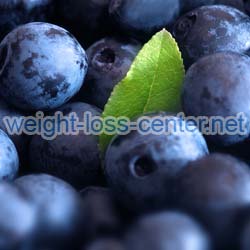 Berries, such as blueberries, are high in antioxidants while being low-calorie, which makes them the perfect healing weight loss foods. Healing Weight Loss Foods to Add to Your Diet
While this list is not exhaustive, you should try to add at least a few of these foods to your diet to improve your overall health:
- Healthy fat fish – Adding fish like salmon and tuna to your day will not only give you some protein to boost your energy and help to manage your blood sugar levels, but these fish can also help to reduce cholesterol and improve blood circulation.
- Green tea – The tannins in green tea help to promote a faster metabolism, but they also help promote cell repair in the body. This can help to offset infections and some studies have shown green tea might be a cancer preventing food.
- Ginger – With ginger, you can help to heal and to prevent a number of stomach and digestive woes. Adding this to recipes or eating it raw will help give you the maximum effect.
- Cabbage – While this food may seem to be primarily water, cabbage is linked with many healing properties, helping to create a healthy life.
- Leafy Greens – The vitamins, minerals, and antioxidant properties of leafy green vegetables, such as spinach and kale, will help your body feel energized, while also helping to prevent cancerous growths in the body.
- Soy – Study after study has linked soy with helping the heart become healthy and to help the hormones be balanced over the long term (for more information about soy, read the post “How Healthy Are Soy Products?“).
- Garlic – This food has been linked with antibacterial and anti-viral properties, allowing it to help boost the immune system, while also protecting the heart and the blood vessels.
- Citrus fruits – The antioxidant properties of citrus fruits have been widely researched, showing they can help to prevent damage from free radicals in the air, while also boosting immune system function.
- Berries – Berries also have antioxidant properties that can help a person improve their health while also allowing the person to protect themselves from environmental damage.
- Dark chocolate – The antioxidants in chocolate are also revealing themselves to be healthy for the heart as well as for managing depression and anxiety (also see the post “Chocolate Increases Weight Loss“).
Choosing to add some of these weight loss foods with healing powers to your diet will not only help to promote good health, but their calorie counts are low, making them helpful for diet plans. Try adding just one or two of these foods each week to see what you enjoy and what you do not. Over time, you will create a diet that protects you as much as it helps you to be slimmer.
Other Related Posts and Articles you May Find Interesting: “How Antioxidants Enhance Weight Loss”, “Best Foods for Weight Loss”, “Healthy Weight Loss Diet May Prevent Cancer” and “Foods that Improve Heart Health”.
While the idea of being green may seem like a bit of a trend more than a movement toward a healthier planet, there is much that can be gained from going green. Not only can you help the planet and your community, but you can also help to create a healthier and a trimmer new you with some green dieting advice. Being green doesn’t mean you need to change your entire life, but it can help you to take steps that help you in your fitness and diet goals.
 Green dieting is not only eco-friendly, but it is a wonderful way to add fresh, local produce to your diet and get some fresh air when exercising. An easy way to begin Green Dieting and to add healthy foods to your diet is to head to a local farmer’s market. These markets allow you to pick from local and fresh product and meats, which helps to support local farms and, in some cases, organic farming (of course not all foods sold at farmer’s markets are organic – ask if you’re not sure). Overall, small farming practices are much better for the environment than large scale, mass-production farming that uses large amounts of chemicals, such as pesticides and herbicides and other destructive practices to get products to the grocery store.
Another benefit of buying local produce is that the foods have not had to travel from far away places, unlike the ones you might find in a chain grocery store. Thus, by green dieting with local products you are helping to lessen the gas that’s been used for food transportation and associated combustion emissions to the environment.
Most people find that local produce bought from farmer’s markets have more flavor and are often much cheaper than foods you see at the grocery stores. Try heading to the farmer’s market in your area to choose foods to eat for the week, supplementing with your local grocery store as needed. Our family loves a trip to the country on the weekends to the local farmer’s markets. Their selection and quality of cheeses, meats, eggs, fruits and vegetables are far beyond what we can find at a chain grocery store. It is a fun family outing that I have been doing since I was a child.
If you don’t have a farmer’s market in your area, you can often head to your local grocery store and find organic and natural foods to eat. When in the produce section, look for foods which are labeled as organic. Organic products are grown and manufactured without the use of chemicals and often without GMOs (genetically modified organisms). Consuming foods that have been grown without the use of chemicals or GMO’s is not only good for your health, but is an eco-friendly way to eat that helps to support good farming practices.
Of course, green dieting doesn’t just include finding natural ways to eat, but also to exercise. When you want to be more eco-friendly in the way you exercise, heading outside for a walk, bike, or run is a great idea. Instead of driving to the gym in order to workout, you will be able to enjoy nature and get into shape. Find a local trail or a park where you can move amongst the trees and animals, helping to burn calories without hurting the environment at the same time. In addition, you might want to volunteer to clean up the parks or the waters near you, also helping you add exercise to your day while also supporting the earth.
Choosing to go green with your diet and exercise program doesn’t have to be hard. With just a few basic changes to your lifestyle, you will find that being eco-friendly is not only good for the world, but you will also feel better and look better at the same time. Over time, you will find that more green steps are easier to implement once you have these basics down.
Other Related Posts and Articles you May Find Interesting: “Eating Organic Foods”, “Healthy Weight Loss Diet May Prevent Cancer”, “Anti-Cancer Drug Added to Junk Foods” and “Anti-Diet Approach to Losing Weight”.
The stress you feel in your life may not be under your control, but what you eat each day is completely under your control. By taking the time to choose foods which can boost your body in times of stress, you can change the way your body responds to stress. While eating a well-balanced diet is always helpful in managing stress, there are also some diet foods which can help you to control anxiety and tension. Though many more exist, complex carbohydrates, almonds, and avocados are some of the most celebrated.
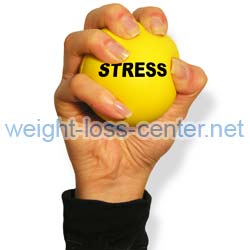 Try adding some of these stress reducing diet foods to your daily meals to get a grip over stress and anxiety. Complex Carbohydrates
While many diets will tell you to avoid carbohydrates, this might not be a good idea when you are trying to manage stress too. With complex carbohydrates, you will be controlling the blood sugar levels in your body as these are more difficult foods to break down than simple carbohydrates. This will lead to fewer food cravings.
In terms of stress control, complex carbohydrates encourage the body to produce serotonin, a stress relieving chemical in the body. This will allow you to maintain a sense of calm, even when things are a bit crazy in your life. Try eating a few servings of complex carbohydrates each day, including whole grain breads, brown rice, high fiber breakfast cereals, oatmeal, beans, lentils, bran and barley.
Almonds
Almonds are one of my favorite diet snack foods. They are high in protein, which can help to curb hunger and only a small handful (10 almonds) can be a satisfying snack between meals. Almonds are also high in vitamin E that can help to protect the heart as well as the mind from the damaging effects of stress. In addition, almonds contain high levels of B vitamins, which support the nervous system and create a stable mood level. Eating a small handful of almonds each day can provide stress-reducing benefits while also helping to quell hunger and keep a diet on track.
Avocados
Many dieters avoid avocados because of their high fat content. Avocados, however, are filled with healthy, monounsaturated fats that help to lower cholesterol and protect the body from stress and damage. Also, the high potassium levels in avocados are helpful for managing stress. So when you are feeling particularly stressed out, try eating a small serving of avocado each day to help you manage your weight and balance your feelings of anxiety and stress.
Milk
Milk can soothe jagged nerves while also helping to boost weight loss. Studies have shown that adding dairy to your day (low fat, of course) can help you to drop pounds as well as feel calmer. Yes, a glass of warm milk can really help you fall asleep at night. Try adding a cup of yogurt or skim milk to your daily diet to allow you to feel the full effects.
For myself, I am a chronic poor sleeper and now that I am over seven months pregnant, getting a good night’s sleep is becoming very difficult. In the middle of the night when I just can’t get back to sleep I make myself a cup of warm milk. I do not add a sweetener, but sometimes a shot of vanilla or almond extract for a little added flavor. In no time I am sawing logs again and my mind is peaceful. Milk – it does the body and mind good.
How Stress Affects Weight Loss
Not only can stress result in making poor food choices and overeating, but it also may also lead to weight gain. Some studies have shown that stress triggers the production of a hormone called cortisol in the body and cortisol may be linked to the accumulation abdominal fat (see the article “Weight Gain and Stress”). As well, stress in your life may prevent you from getting a restful night’s sleep. This too can either slow weight loss or cause weight gain (refer to the article “Sleep and Weight Loss”).
As you can see, while the stress reducing diet foods mentioned above may not be your typical foods eaten when you are trying to lose weight, adding some of these in moderation might be beneficial not only to your diet, but also to your stress levels. How you feel can affect the way you eat, how you sleep and your weight loss success. Finding ways to lower stress in your life, be it with diet, exercise, relaxation techniques or other methods will be of great benefit to your well-being, whether or not you are trying to lose weight.
Other Related Posts and Articles you May Find Interesting: “Weight Loss Foods that Improve Your Mood”, “How Stress Affects Weight Loss”, “3-A-Day of Dairy Weight Loss Program” and “Why You Need Carbohydrates”.
As the days become sunnier and longer, it becomes more obvious that you’re going to have to shed that bulky sweater soon. Instead of fearing the day when you have to reveal your winter body, you can start a spring diet to help weight loss that includes new and fresh groups of foods. With so many fresh foods available in the springtime it’s not difficult to lose weight, trim calories, and improve your overall health and energy.
 A healthy spring diet that includes fresh, seasonal fruits, vegetables and produce can help you lose weight before summer. Here are some tips for a spring diet that will help you slim down and feel great:
Choose More Fruits – One of the best foods to eat as the days become longer is fruit. Fruit is lower in calories, high in energy, and readily available without the need for preparation. By having a few different kinds of fruits available, you can begin to reduce your overall calorie intake, while also adding more vitamins and minerals to your day.
Most fruits are high in fiber, which will not only improve your digestion but will help you feel fuller longer after a meal. Try adding two to three servings of fruits to your daily diet, preferably in whole fruit form. While drinking fruit juice can be healthy, it typically contains many more calories, less fiber, and less benefit for weight loss as a result.
Add More Vegetables – Vegetables are another low-calorie, nutrient packed food to add to your springtime diet plan. By choosing to add at least one vegetable to each meal is a simple way to add more nutrients and fiber to your diet. Vegetables can be prepared in a number of ways too. Tossing a few vegetables together can create a salad on the go, while grabbing a handful of uncooked vegetables to eat can create a good snack for those who don’t have a lot of time to spare. You might also want to think about adding a new vegetable to your grocery cart each week to keep things interesting.
Often people complain that they do no like the taste of vegetables and eating the full recommended servings each day is difficult. If this sounds like you and your family, make it your new goal this spring to try preparing a few meals a week that include fresh vegetables. Experiment with different vegetable dishes to find ones that tickle your taste buds.
Get Cracking With Eggs – With the springtime comes puffy yellow chicks and lots of fresh eggs from local farms. Despite their bad reputation for causing high cholesterol, each egg is a powerhouse of protein, vitamins and minerals. In fact, each egg has less than one hundred calories and contains almost as many nutrients as a daily multi-vitamin. If you are worried about fat or cholesterol, you can simply use the egg whites and avoid the yolks.
In your new spring diet to help weight loss, try creating an egg salad or a vegetable omelet for a light breakfast. You can also create deviled eggs with a low-fat mayonnaise and some mustard for a healthy party dish or store some boiled eggs in the refrigerator for quick snacks.
What are some Seasonal Spring Foods?
Of course adding fruits and vegetables to your diet, even if they aren’t ones in season, is always a good thing to try to do. However, fresh fruits and vegetables that are in season are nutrient-rich, have better flavor and can be cheaper when bought at local farmer’s markets. Seasonal spring fruits include: berries, bananas, figs, mangoes, kiwi, peaches, nectarines, plums and pineapple. Seasonal spring vegetables include: asparagus, beets, peas, fiddleheads, kohlrabi, spinach, corn and peppers.
No matter how warm it is where you live, adding some light spring foods to your diet can help you boost your immune system, your energy levels, and your weight loss. Take some time to see what foods are seasonal in your area and take a taste of all that spring really does have to offer.
Other Related Posts and Articles you May Find Interesting: “Weight Loss Foods that Improve Your Mood”, “Weight Loss Vitamins in Your Diet”, “Eating Organic Foods” and “Best Foods for Weight Loss”.
It’s interesting that dieting is not necessarily the key to long term weight loss success. While cutting calories and increasing your exercise will allow you to lose weight, when you finally reach your goal weight and the ‘diet’ is over, you still have a lot of work to do. Those dieters who have had long term weight loss success are those who have shed their old habits and patterns as well as their weight. Your mindset is the most important tool you have for lasting weight loss. Cultivating the lifestyle habits that are needed for losing weight and weight management after you reach your goal are extremely important and are not as complicated or difficult as you may think.
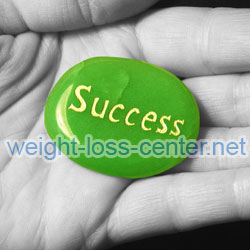 Making small, healthy changes to your lifestyle gradually is key to long term weight loss success. One of the main keys to long term weight loss success is to start good habits right from the beginning of your diet. Part of this process will be taking a look at your eating habits. Keeping a food journal (or using a diet tracker like fitday.com) will allow you to see how much food you are eating, when you are eating it, and what foods may trigger you to eat too much. By taking the time to look at the foods you eat, you will begin to see patterns and you can begin to make small, but significant changes to your diet and your eating habits.
Perhaps you begin with making it your goal to eat a healthy, lower-calorie breakfast at home during the week instead of skipping breakfast or buying a calorie-laden coffee and pastry (for a few low-calorie breakfast suggestions, see the post “Low-Calorie Breakfast Ideas“). Then, when you are comfortable with this change in your eating habits perhaps you can try making a healthy lunch for yourself every day and so on (you can find some suggestions for lunches too in the post “Low-Calorie Lunch Ideas“). By making very small changes to the way you eat, you increase your chances of losing weight and keeping it off. Find small things you can do to change your food intake and reduce the amount of calories you eat each day (e.g. cutting out soda, eating breakfast, keeping a selection of low-calorie snacks, etc.). Small changes that you make gradually over time are much easier to incorporate into your life than making huge, sweeping changes that leave you overwhelmed.
Taking small steps to make the lifestyle changes needed for long term weight loss success also applies to your exercise habits. Start out slowly and build up from there. The more you exercise and the stronger your body becomes the easier it will be to do more. If just getting out for a 30 minute walk every night is all you can manage at first that’s OK. Again, don’t overwhelm yourself with large commitments, such as exercising at the gym 5 days a week. Although some people may be able to make these big life changes, most people find it difficult at first and need to start out slower.
As most of us know, losing weight is not only a physical challenge, but a mental one. Mentally, the primary key to long term weight loss success is realizing that losing weight isn’t just about reaching your goal weight, it’s about making healthy lifestyle changes that will last a lifetime. When you want to lose weight for the long term, you need to look at eating and staying in shape as who you are, not what you are doing until you reach a certain goal. The habits you are making right now are the habits you should plan to stick to for the rest of your life. By taking the time to make small changes, you will make these habits stick and you will create a healthy new you, almost without realizing it.
Along with your long term approach to weight loss success, you also need to remember that perfection does not exist in the dieting world. You will not necessarily eat the right foods all the time, and you may not always exercise as much as you would like. However, if you make the effort to stick to your healthy lifestyle changes even 80% of the time, it’s likely you will keep your weight off or you will be able to take off any weight you may gain. After all, there will be times when you will want to eat a treat or a larger meal and you should be able to do so without feeling guilty for the rest of your life.
Long term weight loss is not just a goal that you reach; it is something that you dedicate time and energy to each and every day. While it might seem you can relax a bit after you’ve lost weight, always remember that you’re living a new life, one with new habits and new patterns you worked very hard to develop. Embrace these new changes, avoid slipping back into old habits, and you will be well on your way to a lifetime of weight loss success.
Other Related Posts and Articles you May Find Interesting: “Tips for Making Healthier Food Choices”, “5 Stages of Weight Loss Grief”, and “Workplace Weight Loss Tips”.
|
|














